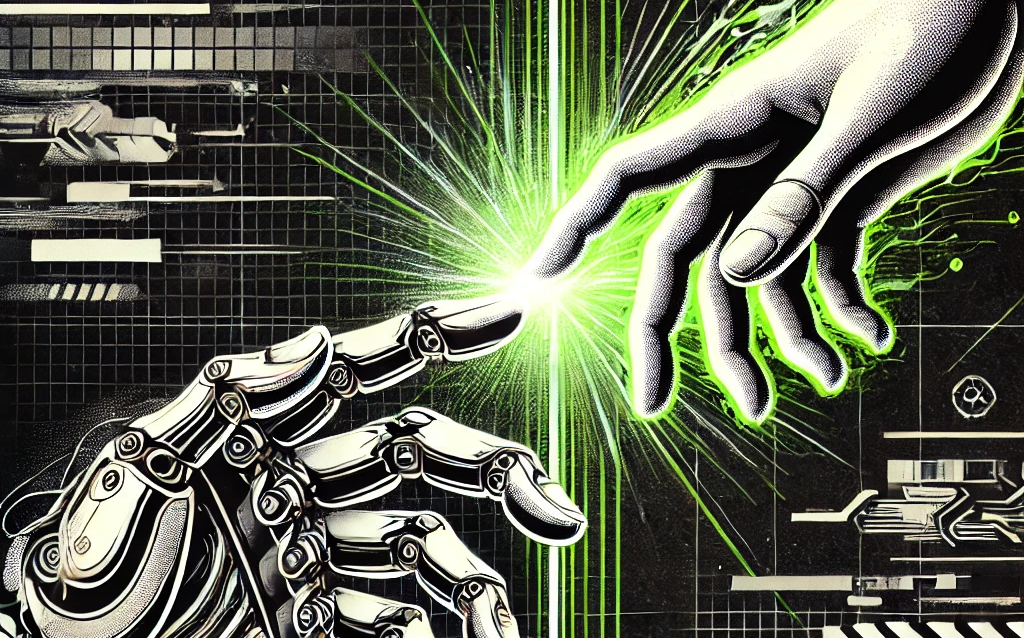Behind the AI Narrative: Who Owns the Tokens and Why Does It Matter?

With $42.6 Billion Market Cap., AI tokens are everywhere right now — with bold promises and big dreams. But before you put your money in, ask: who actually owns these tokens?
This matters more than you might think. When a few wallets hold most of the supply, they can manipulate prices, control governance, and put your investment at risk.
On the flip side, projects with decentralized ownership are often more stable, transparent, and community-focused.
In this article, we’ll explore the top AI tokens, analyze how their supply is distributed, and explain what it all means for you.
Why Token Distribution Matters
In crypto, token distribution is more than a technical detail. It shows how decentralized (or centralized) a project really is.
Here’s why this matters:
- Fair Governance: Decentralized tokens let the community vote on important decisions. If a few wallets hold most of the supply, they can make one-sided decisions.
- Market Stability: A well-distributed token supply is less prone to price manipulation. When large holders (whales) sell off their tokens, it can crash the market.
- Investor Confidence: Tokens with balanced ownership attract more trust. If most of the supply is held by just a few wallets, people are less likely to trust the project.
Pro Tip: Bubblemaps make it easier to see these patterns. By visualizing token distribution, we help investors identify clusters of concentrated ownership and assess risks.
The takeaway? Before you invest, you need to know who holds the power.
The Top AI Tokens and Their Ownership
Let’s take a closer look at some of the leading AI tokens. Understanding how their supply is distributed will help you see the risks and opportunities behind the hype.
1. $AIXBT
$AIXBT is the token for an AI-driven analytics platform, aixbt terminal, that helps crypto investors make smarter decisions.
It tracks on-chain activity and analyzes projects, acting like an AI research assistant.
- The token’s supply is split into four main clusters, each holding about 4%.
- One of these clusters is tied to Wintermute, a trusted market maker.
- With no single wallet dominating the supply, $AIXBT looks decentralized and stable.
2. $AI16Z
$AI16Z is a parody of a16z, the American VC led by Marc Andreessen and Ben Horowitz.
Launched on October 25, 2024, it gained traction with ElizaOS, an open-source framework for creating customizable AI agents, making it a standout in the AI Agent space on Solana.
- Despite a new concept and strong narrative, ownership is a concern.
- A presale wallet holds 10% of the supply, and 38% is concentrated in a few wallets.
- While the project shows promise, investors should carefully consider these risks.
3. $VIRTUAL
$VIRTUAL powers Virtuals Protocol, a platform for co-owning AI agents that generate revenue in gaming and entertainment.
These agents can automate tasks like trading or data analysis, making it a handy tool for developers.
- One wallet, likely owned by the project, holds 7.3% of the supply. Another cluster accounts for 8%.
- While the protocol offers tools for creating, managing, and monetizing AI agents, it’s worth monitoring wallets tied to the project itself.
- Overall, this looks like a balanced project.
4. $FARTCOIN
$FARTCOIN originated from an exchange between AI agents in the “Infinite Backrooms,” a project by independent scientist Andy Ayrey.
The AI agent Truth Terminal suggested “Fartcoin” as the perfect meme coin concept. Later, an anonymous developer brought it to life on Solana using the Pump.fun platform.
- What makes $FARTCOIN stand out is its impressive token distribution.
- The largest cluster holds just 2% of the supply, making it one of the most decentralized tokens on this list.
- This balance reflects its community-driven ethos while maintaining a structure that supports long-term trust and stability.
5. $VADER
$VADER powers a decentralized liquidity protocol designed for fairness and accessibility in DeFi.
With features like token swaps, synthetic asset minting, and impermanent loss protection, the protocol aims to create a solid financial system with minimal governance.
Its collateralized stablecoin, USDV, pairs with other assets to reduce volatility and enhance stability.
- Only 10% of the supply is held by the top 10 clusters, the lowest on this list.
- Additionally, 50% of the total supply is staked, reflecting long-term commitment.
- This is a perfect combination of decentralization and active participation in the ecosystem.
6. $SPORE
$SPORE uses AI to improve DeFi platforms and powers Spore.fun, an experiment in autonomous AI evolution.
Run on Phala Network, Spore.fun allows AI agents to create tokens, generate wealth, and compete for survival. Successful agents reproduce, passing on traits, while failed agents self-destruct.
Inspired by natural systems, this ecosystem simulates evolution to foster adaptive AI swarms.
- Despite its bold vision, ownership data raises concerns.
- A single cluster holds 40% of the supply, and 51% is controlled by the top 10 clusters.
- This creates risks of price manipulation, making it a high-risk, high-reward investment.
Notable Mentions
Here are a few more AI tokens worth knowing about:
- $GOAT: An AI-powered trading assistant for retail investors. The supply is well-distributed, with the largest holders accounting for just 12.08%, making it a fair and accessible option for smaller investors.
- $TRUST: A DeFi platform that uses AI for risk management. While 17.30% of its supply is concentrated in top clusters, this level is reasonable for its $25M market cap.
- $GRIFFAIN: A content platform that rewards creators and curators with blockchain-based incentives. Ownership is relatively even, with the top clusters holding 17.45% of the supply, supporting fairness and community engagement.
- $ALCH: Focused on supply chain automation with AI. Nearly 23% of the supply is concentrated in top clusters, which raises some concerns about governance despite its strong use case.
- $SNAI: An AI analytics tool for market predictions. Its balanced ownership, with top clusters holding 19.90%, makes it a stable option for investors looking for reliability.
- $ZEREBRO: An autonomous AI system designed to create and distribute culturally impactful content, particularly in finance. Nearly 20% of its supply is concentrated in a few clusters.
Patterns and Insights
Analyzing the ownership of AI tokens reveals key patterns that highlight risks and decentralization levels:
- Decentralized Leaders - Tokens with balanced ownership are less prone to manipulation:
- $FARTCOIN: Most balanced distribution with largest cluster at just 2%, showing true decentralization
- $VADER: Only 10% held by top clusters, with 50% of supply staked for long-term stability
- $AIXBT: Supply is spread across four clusters at 4% each, including trusted market maker Wintermute
- Highly Centralized Tokens - Concentrated ownership creates risks like price manipulation:
- $SPORE: A single cluster controls 40%, with 51% of supply held by top clusters, creating significant risk
- $AI16Z: High concentration with 48% in top holders including 10% presale wallet retention
- $ALCH: Concerning 23% concentration in top clusters despite strong use case
- Balanced but Worth Monitoring - Some tokens are generally well-distributed but have areas that deserve attention:
- $VIRTUAL: While mostly decentralized, project wallets holding 7.3% plus 8% cluster warrant observation
- $TRUST: 17.30% top holder concentration is reasonable for $25M market cap
- $ZEREBRO and $SNAI: Around 20% top cluster concentration shows moderate centralization risk
Conclusion
When you’re looking at AI tokens, ownership is one of the most important things to check. More than what the project claims to do, it’s about who controls the tokens.
Projects like $AIXBT and $GOAT are good examples of tokens with balanced ownership. They’re less likely to be manipulated, and their structure supports trust and stability.
But others, like $SPORE and $AI16Z, are highly concentrated in a few wallets. This kind of setup can lead to governance issues and price swings, putting your money at risk.
Here’s How to Detect Patterns with Bubblemaps
- Visit Bubblemaps.io: Log in with a Web3 wallet or explore without logging in for a quick overview. (Log in with an email address if you're using V2)
- Search for a Token: Use the search bar to find any token by name, address, or symbol.
- Select the Blockchain: Choose the correct blockchain network (e.g., Ethereum, Base, etc.) to get accurate token mapping.
- Analyze Wallets: View the map of wallet clusters, and click on individual bubbles for wallet details and transaction histories.
- Detect Patterns: Use filters to identify token clustering, concentration, and flow.
The bottom line? Always check who owns the tokens before you invest. It’s a simple step that can help you avoid unnecessary risks and make smarter decisions.
Written by: Uddalak Das

